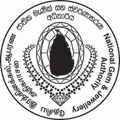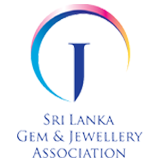Basic Lapidary Diagrams
The oldest known Sri Lankan gem set in jewellery is a pink sapphire set in a ring found in Afghanistan and dating back 2500n years old, in fact some gems (before faceting and drilled to be beads) found in mines are so old they cannot be effectively dated (ref. Sri Lankan Legacy: A history of Sapphires – Jack Odgen). Sri Lankan gems have travelled the through the entirety of the ancient world – from adorning crowns in Germany to beautiful jewellery in the orient. This was mainly due to the beauty and the precision cutting techniques used in Sri Lankan gems.
Gem cutting in Sri Lanka has advanced so much through the mixing of traditional techniques with modern technology in synchronized perfection to create a piece of beauty every time, making the cutting process in to an art form to be mastered at its highest form. The traditional method of gem cutting is to use a Hanaporuwa - a machine that requires considerable skill to operate. The machine consists a bow that drives a vertical lap at which each facet of the gem is ground. This was how Sapphires, topaz and other precious gems were cut traditionally. The specific knowledge for precious gems being cut by this method has been passed on for centuries and generations.


Now, with the advent of new and more precise machines – such as software assisted precision cutting, the gem cutting industry has emerged a great strength, marrying traditional knowledge and expertise with the technologically advanced present to create the finest cuts available; here old knowledge meets innovation and this creates a great vortex of progress – especially in the business of gem cutting. Being a leader in coloured stones globally, Sri Lanka practices its craft to extremely high standards, precision cuts and fine face up colours are almost always guaranteed. In addition to this, highly skilled re-cutting in Sri Lanka is up to international market standards of proportions, symmetry, and brightness. Fine precision cutting to tight tolerances on modern lapidary equipment is being applied to calibrated goods that meet the strictest requirements, including those of the watch industry.
These precision cutting methods are also applied to another great export from the Island Nation – the Sri Lankan Topaz. Available in a rainbow of colours ranging from blue, blue green, brown, yellow, sherry yellow and pink. Extremely rare, white whale-like Red does exist seen by only a handful of people, and is said that pink is the most common occurrence. Colourless topaz can be induced in to colour via irradiation and neutron bombing – the topaz takes on beautiful shades of blue through this process, and the Sri Lanka Topaz is known to be the most susceptible and respondent to these types of treatments, the stones peacock into beautiful shades in the front of your very eyes – a sight to behold indeed.
The Sri Lankan Gem trade has been ubiquitous through time, with older and older examples being found. With an eye on the future the trade is gearing up consistently and improving the processing and quality of the product to meet the stringent requirement of international markets. For instance, the precision cutting developed in Sri Lanka are used in the intricate and precise industry of time-pieces; luxury watches carrying Sri Lankan cut gems are growing due to the ability of Sri Lankan Lapidary to stay a cut above the rest. All in all, this is a growth industry that has been growing for over millennia as we know it and will continue to go from strength to strength.





